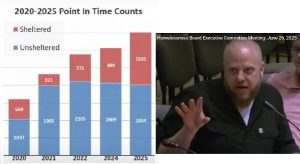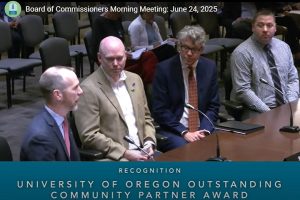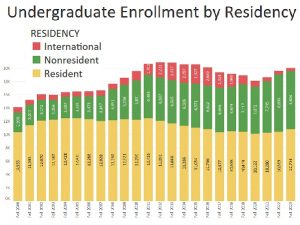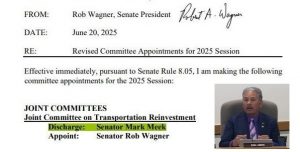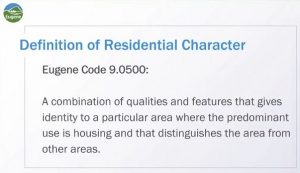Julie Lambert interviews Activist-at-Large R Self
6 min read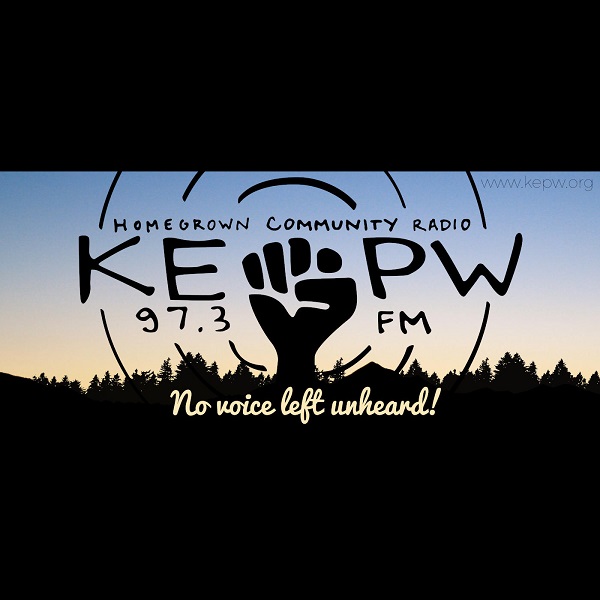
Julie Lambert: Our guest interviewee today is R Self, activist-at-large, a member of several civic groups in the area, including the Lane County Poverty and Homelessness Board Workgroup, the Shelter Stakeholders Committee, the Coordinated Entry Committee, and the Lived Experience Advisory Group for Unhoused Engagement (LEAGUE), as well as others. We asked him questions like: What should we be doing as unhoused advocates and community members?
[00:00:32] And: What have we accomplished in the city and county for our unhoused folks? And most importantly: What can we do to improve the current situation for our unhoused as advocates in this community?
[00:00:49] R Self: One thing we need we should be doing is—and I think we’re doing as advocates—is recognizing that these folks that are unsheltered and unhoused are part of our community and therefore they are we, and the more we do that, that will solve a ton of problems.
[00:01:11] But in the meantime, what have we accomplished? Well, because of our work in the Shelter Stakeholders committee, in the LEAGUE (which is the Lived Experience group), and then the Human Rights Commission’s Poverty and Homeless Workgroup among others, have made it so the question of, ‘How do you shelter people?’ is now, ‘We have shelter for them.’
[00:01:36] There was some time ago Conestogas and there were Pallet Shelters, but there was nothing like the temporary shelter system that we have now with not only the Rest Stops, but the Safe Sleep Sites and the, they being indoors, some of them and being able to sustain folks for a period of time long as some of them, as long as they need. We’re also able to do medical respite instead of not being able to do it at all, using Pallet Shelters that can be hooked up to electricity and therefore can sustain being in a heated space, even if they’re not inside a warehouse that is heated or so forth or so on.
[00:02:25] So we as advocates—and it took some time to do it—have actually accomplished a lot just in the idea of temporary shelter. And then the idea of, ‘Where do we go from there as far as the unhoused,’ is the more permanent housing that’s coming up, that already has come up, such as The Nel and The Commons on MLK Drive, and other permanent supportive housing that has come up. There’s veterans housing. There’s a project that’s going on near The Nel, also on West 11th, a four-story building that’s being built in conjunction with Homes for Good.
[00:03:11] So as advocates, in the last few years we’ve accomplished more than we did in a decade before that.
[00:03:20] Julie Lambert: Yes, I would have to say that that’s true. Stepping back 10 years ago, there were people that were enclosed in cages underneath the bridge in the middle of town. And it was very disheartening to see. And now there’s still people being persecuted, if you will, because of the fact that they are out there, they are moving around.
[00:03:46] Sweeps are still happening and there are actions around this. Do you have anything to say about the people that we haven’t been able to reach that are still out there are still vulnerable, still subject to being moved at any given time?
[00:04:03] R Self: We have, as advocates helped to alleviate some of that so that there are now at least notifications before a sweep. There is now a group of people, I think you know the name of them that are already on to go at a moment’s notice, should there be a sweep. What’s the name of that group, Julie?
[00:04:31] Julie Lambert: There’s several. There’s Eviction Defense, there’s Stop the Sweeps, I know that Black Thistle Street Aid is involved. There’s a dedicated group of people who are boots on the ground that come to the rescue of people whenever possible to assist them with everything, from assisting them with dealing with the police—so things can be settled amicably and don’t escalate—to helping them move their property, to hooking them up with appropriate social services or medical needs.
[00:05:10] R Self: You’ve been an advocate for longer than this guy right here. And in that time, it, it took a long time just to get to there. This again comes out of constant advocacy for those who have no voice in all of this and should have a voice, but at this time do not, except for folks like us and many others who do advocate work through all of us and all of our voices, we’ve gotten to city leaders, we’ve gotten to county commissioners. We’ve gotten to people that are in charge.
[00:05:47] And I thank God that we have a housing czar, if you will, at least for the county, that is compassionate and empathetic to our cause, and that helps accomplish a lot.
[00:06:01] What we have done and said is not no longer falling on deaf ears. Even though there still are sweeps, there’s not as many, and they’re fewer and far between. And the police—at least Chief Skinner and some others—are more advocates for using things like CAHOOTS and so forth rather than the police for these kinds of calls and more.
[00:06:30] Julie Lambert: I have a question for you. What would you envision, let’s say, just a year from now, a person seeking services that is unhoused. What is that experience going to be like for them? What do you visualize it from now? I know that you want much more than what we can do a year from now. But what do you think is realistic for us to expect?
[00:06:53] R Self: Part of that would come from how we start the process to help folks that are unsheltered actually get off the street and into not just temporary shelter, but actual shelter.
[00:07:06] How do they do that? Well, the system that is right now, called coordinated entry—that delivers folks to the centralized wait list and uses scoring from something called the VI-SPDAT, which is completely Greek to a lot of people that are listening—this all has worked to do very little to get people actually referred to housing.
[00:07:30] Doesn’t really help, in that if you do find, wherever there is an actual coordinated entry assessment person—that culturally wrong ethnicity-wise and otherwise is wrong—but it’s being used. Most people end up—after getting a ‘front-door assessment’ it’s called—they end up with paperwork for places for wait list for two and three and five years. After you do that, you’re on the centralized wait list for about six months until your time expires.
[00:08:02] And then you have to go get another assessment, which most people don’t know. And to keep yourself on track to do all this and people end up falling by the wayside. So one thing that’s going to change in a year is that whole system, and there is now a committee because of our advocacy work. That’s the Coordinated Entry Committee that is very headstrong about changing all of it, including not using this VI-SPDAT scoring business, but rather prioritizing needs.
[00:08:34] And, also there will actually be a place to go and everybody’s going to know where you go, whether it’s going to be the new Stabilization Center may be a part of that. That’s not going to happen in the next year, or there’s going to be an actual ‘Point A’ somewhere that will be well-advertised. That’s going to be part of it, so you’ll know where to go.
[00:09:01] Julie Lambert: Thank you, R Self, for providing us with an image of what things to come will look like. We’ll be hearing from Mr. Self later. For KEPW 97.3 FM, this is Julie Lambert.
